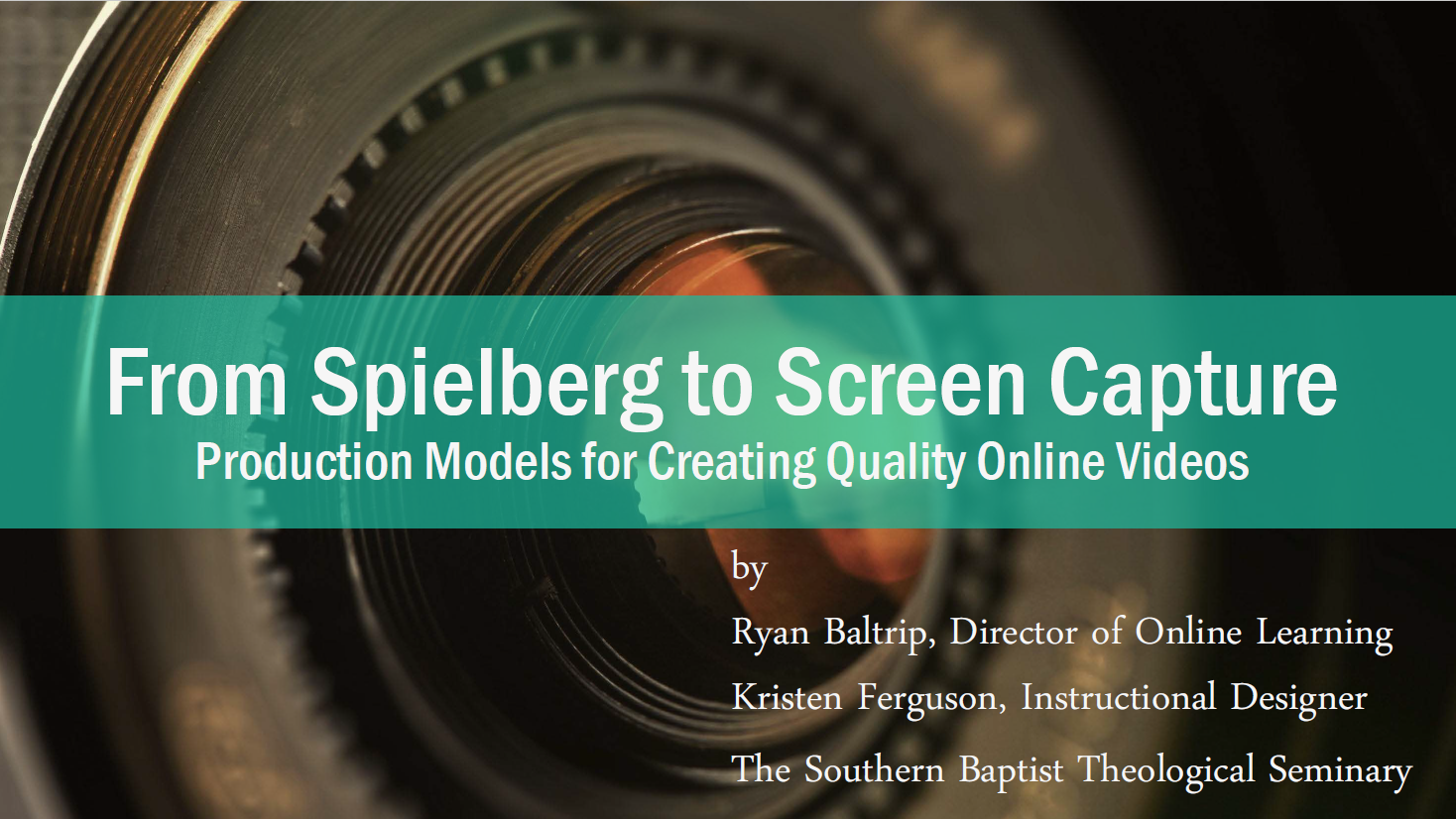Steps to Improving Online Learning Video Production
High-quality video is an essential component of engaging online courses. In 2017, while at William & Mary, I teamed up with Instructional Design Specialist Josh Chung to present at the Online Learning Consortium (OLC). Our presentation, "Steps to Improving Online Learning Video Production", offered practical strategies and insights for educational institutions seeking to enhance the quality and impact of their online learning videos. Presentation Summary: A Roadmap to Better Online Videos The Challenge Online learning videos can range from basic and uninspiring to highly polished and effective. Understanding models and processes for continuous improvement is essential. Profiles: Basic, Better, Best We outlined three broad categories of video quality (Basic, Better, and Best). Each level reflects increasing commitment to production elements and creativity. We stressed that the goal should be consistent improvement across these levels. The Production Process The presentation highlighted three key phases of video production: Pre-Production: The essential planning stage involving vision, administrative support, and resource allocation. Production: The active filming process, emphasizing attention to detail, technical quality, and faculty guidance. Post-Production: Editing, polishing, and finalizing videos, with an eye toward clarity and engagement. Six Production Models We presented six common models for online video creation, ranging from simple to complex: Screen Capture, PowerPoint, Live Class Capture, Whiteboard/Lightboard, and Studio/Location shoots. Investing for Improvement Across all models, moving from "Basic" to "Better" levels requires investment in time, expertise, technical resources, and administrative support. Reaching the "Best" level often involves significant commitment to high-quality production. Key Takeaways The presentation emphasized these core ideas for improving online learning video quality: Creativity is Key: Regardless of your budget, creativity and thoughtful execution can elevate video quality significantly. Process Matters: A clear framework for pre-production, production, and post-production ensures smoother processes and better results. Invest Wisely: Understand the resource demands of each production model to choose the most sustainable approach [...]


